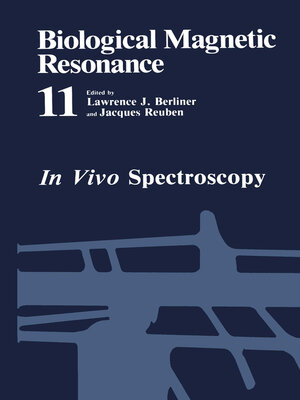
Sign up to save your library
With an OverDrive account, you can save your favorite libraries for at-a-glance information about availability. Find out more about OverDrive accounts.
Find this title in Libby, the library reading app by OverDrive.



Search for a digital library with this title
Title found at these libraries:
| Library Name | Distance |
|---|---|
| Loading... |
In vivo nuclear magnetic and electron spin resonance spectroscopy is concerned, inter alia, with the noninvasive observation of metabolic changes in living systems, including animals and humans. Typically, the physiologi cal (or pathological) state of an organ or tissue is monitored. This multi faceted approach was developed during the 1980s. It is still a research technique, but will undoubtedly become a clinical tool. We are proud to present this volume (the eleventh of our series) in which some of the pioneers in this area summarize their contributions and review related literature. Bolinger and Lenkinski describe a variety of localization methods suitable for clinical applications of NMR spectroscopy. Schleich, Caines, and Rydzewski summarize their contributions to approaches involving off-resonance rotating frame relaxation and critically compare these with other NMR techniques that may yield similar information. Chang and James outline their approach and share their experience with the technical aspects 1 31 of H and P NMR spectroscopy and spatially localized spectroscopy in studies of brain ischemia. Sodium plays an important role in living systems, a key aspect being the large gradient between intra- and extracellular concentrations of sodium that is maintained by a variety of transport mechanisms. Miller and Elgavish give us a comprehensive review of an important research tool in this 23 area- Na NMR spectroscopy as aided by shift reagents.







